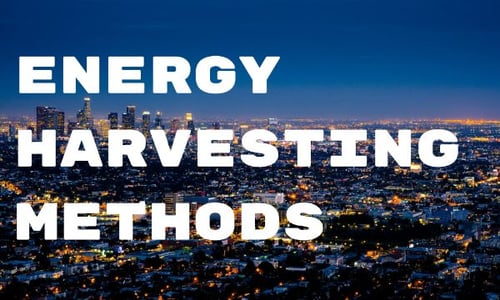
In 2025 there are projected to be over 70 billion connected electronic devices worldwide. Every electronic device needs power to operate which usually comes in the form of a battery.
Batteries are cheap, small and simple to use but have one major drawback, eventually they die.
Battery lifetime has been extended as sensors and microchips consume less power, but making devices that can run 5-10+ years is often not feasible.
For many applications this is a big problem. Every time a battery dies it must be replaced, which requires labor. Automated buildings could have thousands of nodes and servicing all of those devices on a regular basis is labor intensive, frustrating and very costly.
The inconveniences of changing or charging batteries is especially problematic in the consumer market.
For wearable products, every time the consumer takes the device off to charge it, it is an opportunity for them to stop using the device.
According to studies, 50% of people who buy wearables stop using them within a month and charging is a major reason for that.
Dead batteries aren’t only an inconvenience but can also become a safety hazard. The National Fire Protection Agency found that 20% of US homes had smoke alarms with dead or missing batteries.
One way to solve this problem is through energy harvesting, which utilizes the ambient energy present in a device’s environment to operate.
Light, motion, heat, and radio waves are a few examples of energy sources which can often supply enough energy to power many electronic devices. Energy harvesting can reduce or eliminate the need for batteries and make long lifetime electronic devices feasible.
Some common techniques for energy harvesting include thermoelectric generators (TEG), Radio Frequency (RF) harvesters, piezoelectric harvesters and photovoltaics (solar). Each method can extract energy from a specific ambient energy source.
Thermoelectric generators convert heat energy into electric power using the Seebeck effect.
If a temperature difference is present across a thermoelectric material, charge carriers will diffuse from the hot side to the cold side, producing a current. The power generated is proportionate to the temperature difference across the material.
RF waves are all around us and the energy they carry can be harvested. Cellular signals, TV broadcasts, WiFi and other 2.4GHz signals can be harvested by using a rectifying antenna.
Low frequency sources can be harvested at close range using magnetic coupling. Near Field Communication (NFC) protocols such as RFID use this method to operate credit card chips and access point tags without batteries.
Piezoelectric energy harvesting converts mechanical energy into electric power by utilizing the piezoelectric effect. In piezoelectric materials, the electric dipole moments are all aligned in one direction. Because of this, when stress is applied to the material charges are forced out and a potential difference forms. These charges can be harvested and used as a power source for low power electronics.
Photovoltaics absorb light energy and convert it into electric power. Power generation is proportionate to light intensity which varies widely depending on application. Even at indoor light levels, solar can be optimized to generate enough power to run sensors and wireless electronics.
Each energy harvesting method has benefits and drawbacks. The best method is often application dependent.
Because the prevalence of outdoor and indoor light and the general versatility of solar technology, light harvesting is many times the most effective technique for a majority of applications. Amorphous silicon (a-Si) solar panels are extremely durable, ultra-thin, flexible, and customizable. They can be optimized for outdoor or indoor light collection and manufactured in custom sizes.
Amorphous silicon technology is well matched to the visible light spectrum which gives it an advantage in indoor applications over more traditional solar technologies. Indoor a-Si solar harvests enough energy to run home automation and other wireless IoT connected devices.
Do you have sensors of transmitters that you’d like to optimize and power via energy harvesting? We can help! We would love to hear about your application and help make your vision a reality.
Contact us today and let’s get started.